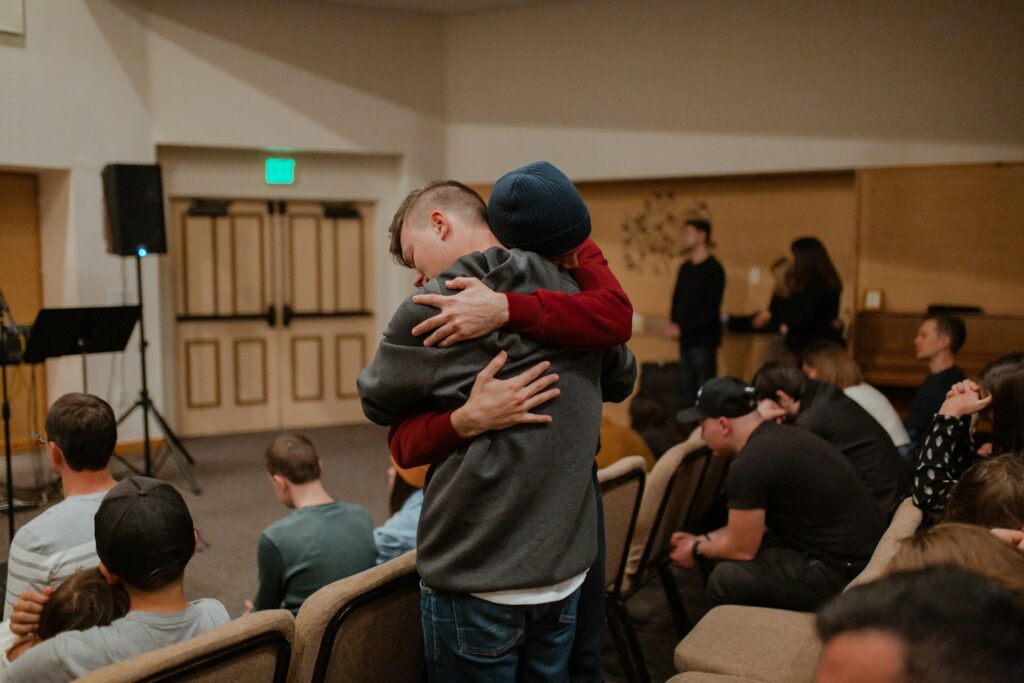People throw the word “gaslighting” around a lot these days—sometimes to the point where it loses all meaning.

However, the real deal isn’t just someone lying or disagreeing with you. It’s a pattern, a power play, and a form of emotional manipulation that’s designed to make you doubt your own reality. And when it’s done well, it can be so subtle that you don’t even realise it’s happening until you’re deep in the fog. Here are some things people often misunderstand about gaslighting, and what it really looks like.
1. It’s not just lying—it’s intentional distortion.

Lots of people lie, but gaslighting takes it a step further. It’s when someone deliberately twists the truth to make you question your memory or judgement. It’s more than dishonesty. It’s a way of making you feel like you’re the one who’s confused or wrong.
This usually plays out over time. The person might deny things they said, reframe events in their favour, or insist that your version of reality is flawed, even when you know what happened. That slow destruction of trust in yourself is the real damage.
2. It’s often dressed up as concern or love.

Gaslighting doesn’t always come across as cruel. Sometimes it sounds like “I’m just worried about you,” or “You’re so sensitive, I don’t want you to get hurt.” These phrases might seem caring on the surface, but they can be used to plant seeds of self-doubt. That’s what makes it so confusing. When someone says they love you while subtly undermining your confidence, it can make you question whether you’re overreacting—when really, you’re just starting to notice the manipulation.
3. It’s usually not a one-time thing.

Real gaslighting is a pattern, not a slip-up. It’s not someone being defensive once or getting into a heated argument and saying something manipulative. It’s repeated behaviour that chips away at your grip on reality bit by bit. Eventually, you start to feel disoriented. You second-guess your instincts, your emotions, and even your sanity. That ongoing distortion is what separates gaslighting from just being a bit toxic or dramatic in the moment.
4. It makes you doubt your gut.

One of the biggest effects of gaslighting is that it makes you lose faith in your own intuition. You might have a strong gut feeling that something’s off, but you’ve been told so many times that you’re paranoid or imagining things that you stop trusting yourself. Eventually, you might start relying on the other person to tell you what’s real and what’s not. That’s exactly what they want—because the more you trust them over yourself, the easier you are to control.
5. It thrives in private, not public.

Gaslighters often come across as charming, kind, or even supportive in public. That’s part of the strategy. They build a version of themselves that other people admire, so when you say something’s wrong, no one believes you. This makes you feel even more isolated. If everyone else thinks they’re great, and you’re the only one who sees the cracks, it’s easy to assume you’re the problem. That doubt is exactly what keeps you stuck.
6. It’s not always loud or aggressive.

Gaslighting doesn’t have to look like yelling or dramatic arguments. It can be calm, quiet, and even soft-spoken. Sometimes it’s delivered with a sigh and a “That’s not what happened, babe.” The tone doesn’t have to be harsh to be manipulative. In fact, the more subtle it is, the harder it can be to identify. The gaslighter’s calmness can make you feel like you’re the irrational one, which only deepens the confusion.
7. It often starts small.

Gaslighting doesn’t usually begin with big lies. It might start with little comments like “You’re remembering that wrong” or “You always overthink things.” These small digs might not raise alarms at first, but they build up as time goes on. Before you know it, you’re questioning events, emotions, and memories you used to feel certain about. It’s death by a thousand tiny contradictions.
8. It can make you feel overly apologetic.

When you’ve been gaslit for a while, you might start saying sorry for everything, even things that aren’t your fault. You begin to assume you’re always the one misreading things or being too emotional. That’s not a personality flaw—it’s a survival response. You’re trying to keep the peace because your confidence in your own viewpoint has been shaken. The constant apologising is often a sign of deeper emotional disorientation.
9. It’s not always done consciously.

Some people absolutely know they’re manipulating you, but others might not. They’ve learned to deflect, deny, and rewrite reality as a defence mechanism, and they might genuinely believe their version of events. That doesn’t make it okay. Intent matters, but impact matters more. Even if someone doesn’t mean to gaslight you, the effect can still leave lasting damage if it’s not recognised and addressed.
10. It often comes with love bombing or guilt trips.

Gaslighting doesn’t exist in a vacuum—it usually rides alongside other manipulation tactics. Someone might alternate between showering you with affection and then withdrawing it to keep you guessing. Or, they’ll guilt-trip you into silence by saying things like, “After everything I’ve done for you?” That hot-and-cold dynamic keeps you off balance and makes you crave their approval. That’s exactly what keeps the cycle going.
11. It messes with your memory.

One of the most unsettling parts of gaslighting is how it can make you question your own memories. You might start wondering if you really did mishear, or if you overreacted, or if you made something up entirely. Eventually, that constant self-doubt becomes exhausting. You might start keeping notes or rereading texts just to make sure you’re not going mad. That alone is a sign that something isn’t right.
12. It can happen in families, not just romantic relationships.

Gaslighting isn’t limited to couples. Parents can gaslight their children, siblings can do it to each other, and even friends can fall into the pattern. Anywhere there’s a power imbalance and emotional manipulation, it can happen. When it starts in childhood, it can be especially damaging because you learn not to trust your feelings or perception from a really young age. That confusion tends to follow people into adulthood.
13. It isolates you from people who might help.

A common move in gaslighting is to cast doubt on anyone who could support you. The gaslighter might say things like “Your friend always stirs things up” or “You know your family exaggerates everything.” The goal is to separate you from other voices so theirs is the only one you listen to. That isolation makes the manipulation even more effective because you have no one to check in with about what’s really happening.
14. It creates chronic self-doubt.

Even after a gaslighting relationship ends, the effects can linger. You might second-guess yourself in new relationships, assume you’re being “too sensitive,” or hesitate to speak up when something feels off. This lasting self-doubt is one of the hardest parts to shake. Rebuilding trust in yourself takes time, but it’s possible. And naming what happened is a powerful first step.
15. It’s not the same as having a different perspective.

Not every disagreement is gaslighting. Two people can remember something differently without one of them being manipulative. The difference is whether the other person respects your view, even if they don’t share it. Gaslighting involves dismissing or invalidating your perception entirely. It’s not “I don’t remember it that way,” it’s “That never happened, and you’re crazy for thinking it did.” That’s a massive difference.
16. Recognising it doesn’t make you weak—it makes you stronger.

Sometimes, people hesitate to admit they’ve been gaslit because it feels embarrassing or like they “should’ve known better.” But spotting it, especially after being in it for a long time, actually shows huge strength. It means you’re starting to see clearly again. Plus, once you can name it, you can start setting boundaries, rebuilding confidence, and choosing healthier connections going forward.


